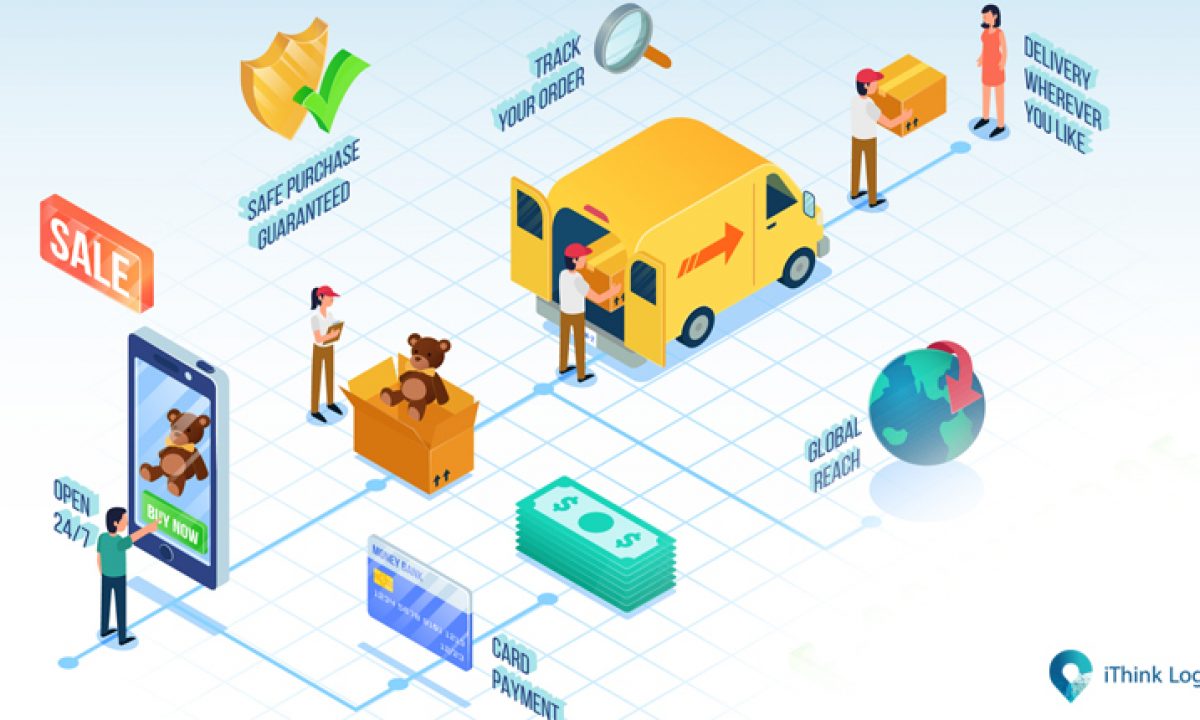When you order something online, you often see the term “in transit” in your shipment tracking. But what does “in transit” actually mean? This article delves into the shipping world, particularly focusing on USPS and FedEx, to demystify what “in transit” signifies and why it’s a crucial part of the shipping process. Whether you’re a frequent online shopper or a business owner, understanding these terms can enhance your shipping experience and set realistic expectations.
What Does “In Transit” Mean with USPS?
“In transit” typically means that your package is on its way to its final destination. It doesn’t necessarily mean that your package is in a moving vehicle, such as an aircraft or delivery truck, at all times. Instead, it indicates that the package is moving through the various stages of the shipping process from the seller’s warehouse to your local post office or distribution center.
USPS Tracking: Deciphering the Messages
When you track a USPS package, the tracking messages provided by the shipping service can be cryptic. “In transit” in USPS means that the package is en route to the final destination. It may be at a USPS facility, in a plane, or in a delivery vehicle. Understanding these messages can help you gauge the status of your shipment.
FedEx Tracking: Understanding the Journey
FedEx tracking operates similarly to USPS. When a package is “in transit” with FedEx, it means that the package is moving from one FedEx facility to another or it’s on its way to the delivery location. FedEx tracking messages may also include estimated delivery dates and times, giving you a clearer picture of when to expect your package.
The Significance of the Estimated Delivery Date
The estimated delivery date is a critical piece of information in the shipping process. It gives you an idea of when to expect your package. However, it’s important to note that this date can change due to unforeseen events like weather conditions or customs clearance delays.
Stuck in Transit: Causes and Solutions
Sometimes, a package gets stuck in transit. This can happen due to various reasons, such as delays in customs clearance, logistical challenges, or unforeseen events. If your package is stuck, contacting USPS customer service or FedEx customer support can provide more information and potential solutions.

Navigating the Postal Service: Understanding Your Package’s Journey
A package’s journey through the postal service is an intricate dance of logistics and coordination. Once a package is dispatched, it travels from the sender’s location to sorting facilities, possibly through various transit points, and finally to the recipient’s local post office. Each step is crucial, ensuring that the package moves closer to its destination. Understanding this process helps customers appreciate the complexities involved and why sometimes delays are inevitable.
The Importance of a Tracking Number in Package Delivery
A tracking number acts as a digital footprint of your package. Issued by the postal service, this series of digits and letters allows you to follow your package’s journey online. By entering this number on the postal service’s website, you can see real-time updates, including when your package was dispatched, its current location, and estimated arrival time. This transparency is invaluable for both sender and receiver, offering reassurance and the ability to plan for the package’s arrival.
United States Postal Service (USPS): A Closer Look
The United States Postal Service (USPS) is a cornerstone of American communication, handling an enormous volume of mail and packages daily. Renowned for its commitment to accessibility and reliability, USPS offers a range of services, from standard mail delivery to expedited shipping options. Its extensive network ensures that even the country’s most remote areas have access to postal services, making it a vital link in the national and international communication chain.
Anticipating Your Package: When Will It Arrive?
The anticipation of a package’s arrival can be both exciting and nerve-wracking. The delivery time depends on various factors, including the shipping method chosen, the distance between sender and receiver, and the operational efficiencies of the postal service. While USPS provides estimated delivery dates, these are subject to change due to unforeseen circumstances like weather disruptions or high volume. Understanding these variables helps set realistic expectations for your package’s arrival.
Deciphering USPS Tracking Messages: A Guide
USPS tracking messages are designed to inform you about your package’s status. Common updates include “In Transit,” indicating the package is on the move; “Out for Delivery,” meaning it’s on the final leg of its journey; and “Delivered,” confirming the package has reached its destination. Messages like “Delivery Delayed” may occasionally appear, signaling unexpected hold-ups. Familiarizing yourself with these messages can help you better understand where your package is and adjust your expectations accordingly.
Ensuring Timely Delivery: How to Get Your Package Delivered On Time
To maximize the chances of on-time delivery, consider a few key strategies. First, choose the appropriate shipping option based on your urgency – express services for time-sensitive items, for instance. Be mindful of cut-off times for same-day dispatch. Ensure the shipping address is accurate and complete to avoid delays. During peak seasons, like holidays, send your packages early to account for the increased volume. Lastly, monitor tracking updates to stay informed of any potential delays.
The Significance of Two Labels in Package Shipping
Occasionally, a package might bear two labels. This usually happens when a package is rerouted or when shipping details are updated after the initial dispatch. The first label represents the original shipping information, while the second label, often placed over the first, reflects the updated routing or delivery details. This practice is essential for ensuring that the package is correctly processed and delivered to the right destination, especially in cases where the initial information was incorrect or changed after dispatch.
The Role of the Final Destination in Shipping
The final destination of a package plays a significant role in the transit time. Packages traveling longer distances or requiring international shipping may take longer and go through more complex processes like customs clearance.
Parcel Journey: From Order Status to Delivery
Understanding the journey of a parcel from the order status to delivery helps set realistic expectations. The shipping time includes the days it takes for the package to leave the sender, clear customs, and travel from the logistics company to your local distribution center and finally to your doorstep.
Decoding USPS and FedEx Tracking Messages
Both USPS and FedEx provide status updates that can include various terms like “in transit,” “out for delivery,” or “delivered.” Each term has a specific meaning, indicating different stages of the shipping process. Knowing these status updates can help you track your package more effectively.
What Does a Status Update Indicate?
A status update is a way for shipping companies to keep you informed about the journey of your package. It can include information about any delays, changes in the estimated delivery date, or notifications when the package has left a certain facility.
The Impact of Shipping Companies on Delivery Times
Different shipping companies have their own methods and timelines for delivery. Factors like the type of delivery service, the efficiency of the courier, and the operational capacity of the company can all impact delivery times.
Conclusion
Understanding the term “in transit” in the context of shipping, particularly with USPS and FedEx, is crucial for anyone involved in the process of sending or receiving packages. This term signifies that a package is on its journey to its final destination, yet it encompasses various stages of the shipping process, from being at a distribution center to being loaded onto a delivery vehicle. While tracking messages and estimated delivery dates offer valuable insights, they are subject to change due to factors like logistics challenges and external conditions. Recognizing that delays can occur and knowing when to reach out to customer service for assistance can alleviate the anxiety of waiting for a package. Ultimately, a clear grasp of these shipping terms and processes sets realistic expectations and enhances the overall experience of online shopping and parcel delivery.
You can reach out to PhaseV for the best ecommerce fulfillment services now!



